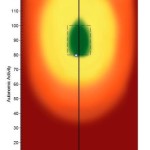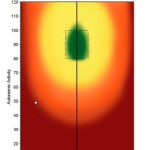Imagine you’re a human being living in its natural habitat, perhaps gathering berries or catching fish. Your heart rate and respiration are relaxed and all your body’s resources are geared toward normal organ functions, the digestion and absorption of nutrients, and maintaining homeostasis. Then, you spot a bear just a few paces down stream. Your blood pressure becomes elevated, your breath shallow, your eyes dilate, regular organ function and digestion is put on hold, blood is shunted away from the heart and toward the large muscle groups, and all of your body’s resources are now working to prepare for “fight or flight”. After you’ve escaped, the body shifts gears again, and once again your body is relaxed and geared toward healthy function, maintenance and healing. This is how a healthy body should have balance between the sympathetic and parasympathetic sides of the autonomic nervous system.
Now fast forward to a time when we’re rarely chased by larger prey, but there’s a long commute through traffic, work and family stress, financial stress, constant contact on our phones, and constant violence and tragedy broadcasted in the daily news. We experience a lot more daily stress than our hunter-gatherer ancestors and the body has not adapted to our modern lifestyle. We now have an epidemic of humans chronically locked into that “fight or flight” state, or the sympathetic side of the system, and an overproduction of cortisol, the “stress hormone”. In this state, the body has lost its healthy rhythm and natural ability to regulate and self-heal.
The ability of the body to have balance and shift between these two states as needed is one of the greatest predictors of longterm health and vitality. Being chronically locked into the sympathetic system overtime can cause you to feel tired and run down, have a lack of energy, feel aching in the joints, have trouble sleeping, gain weight despite exercise and an unchanged diet, and experience a number of other problems that affect many people every day but have often become accepted as normal.
The physical and chemical changes the body has in the presence of chronic stress cannot be ignored and accepted as a part of life. Consistent rises in cortisol production have been linked to serious health issues, including high blood pressure, heart disease, and heightened risk of stroke.
How can you tell if stress is really wreaking havoc on your physiology and well-being, and to what extent? Cardiologists, exercise physiologists, psychologists, and now chiropractors use heart rate variability in different ways to gauge wellness and how well equipped an individual is to cope with various forms of stress. We can measure your balance between these systems by checking your heart rate variability. A decrease in variability has been linked to any number of pre-degenerative or morbid, deteriorating physiologic states, including heart disease, obesity, and accelerated aging. It is not a diagnosis of disease, but an indicator of the body’s state of adaptability, which if low puts one at significantly greater risk for future health problems. Heart Rate Variability is a simple, accurate test that analyzes the rates and rhythms of the resting heart beat pattern. The HRV technology we use is called the Pullse Wave Profiler, specifically designed for chiropractors, it allows the doctor to quickly assess the effect long-term stress is having on the general state of a patient’s well-being. It’s also how we monitor the overall improvements a patient has under chiropractic care. The data reveals the balance between the sympathetic and parasympathetic nervous system.
Studies have shown that heart rate variability is significantly improved with chiropractic adjustments. Chiropractic is a science, art and philosophy that is specifically concerned with releasing and resetting the damaging effects that stress, physical, chemical or emotional, has on the central nervous system.
Here is an example of heart rate variability before and after two months of chiropractic care or approximately 12 adjustments. You can see the sympathetic balance shown on the left side of the boxes, and the parasympathetic system on the right. For a healthy individual with balance between the two systems, the results will show the white marker within the green box.

January March
Other ways to improve heart rate variability and support your chiropractic adjustments include managing your emotional stress, improving nutrition and maintaining a healthy weight, spending time in nature, and keeping an active lifestyle with healthy movement.



